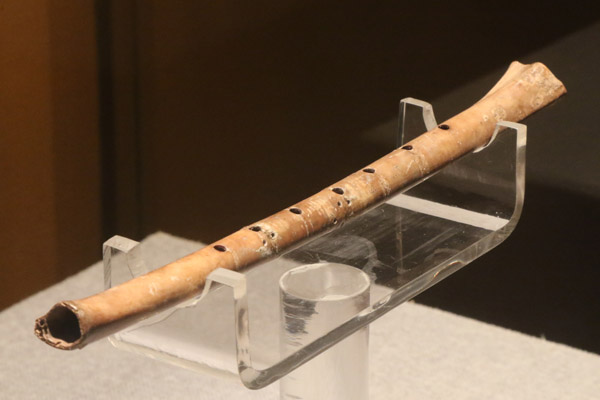 |
|
[Photo provided to China Daily] |
Jiahu Bone Flute
Collection: Henan Provincial Museu
Some 9,000 years ago, a crane died. The carcass was collected by some villagers. Seeing this, the nearby cranes began a mournful wailing.
The villagers extracted the dead crane's wing bone, and carved it into a basic musical instrument.
The finger holes are uneven, and the carving around the mouthpiece is a little careless. But this simple instrument, the fruit of ancient creativity, has been continuously improved upon, and has evolved into the sophisticated flute we know today.
Musician Ding Xiaokui owns a copy of the crane bone flute.
The original, made between 7,800 and 9,000 years ago, was unearthed at the Jiahu Neolithic Site in Henan province. It was one of more than 20 such flutes found there in 1986 and 1987. They are the oldest musical instruments discovered in China.
The first bone flutes may have been used by hunters to mimic a bird's cry. Later, they may have provided music for celebrating a successful hunt. With time, as aesthetic appreciation became more developed, people may have demanded more complex music.
At Jiahu, the development from the older five-holed flutes to the later flutes with seven or eight holes, reveals how civilization progressed.
There used to be a widespread belief that traditional Chinese music had only five tones. The seven-tone scale, it was thought, was introduced from abroad. But the seven-holed bone flutes found at Jiahu have changed our understanding of China's ancient music.